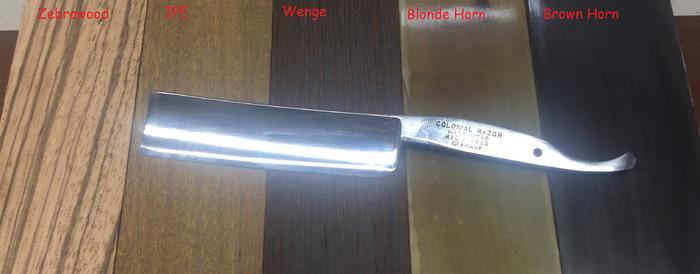Results 21 to 30 of 37
Thread: Scale material
Threaded View
-
06-22-2021, 06:06 PM #1
 Scale material
Scale material
Ok I am ready tp so another set of scales this is some of the material I have. I also have some bone but really am not ready to use that again. For the shape I am thinking something squared off at the wedge end or maybe even angled from bottom to top. what do you guys think about material and shape?

Looking forward to your thoughts
John


 71Likes
71Likes LinkBack URL
LinkBack URL About LinkBacks
About LinkBacks






 Reply With Quote
Reply With Quote